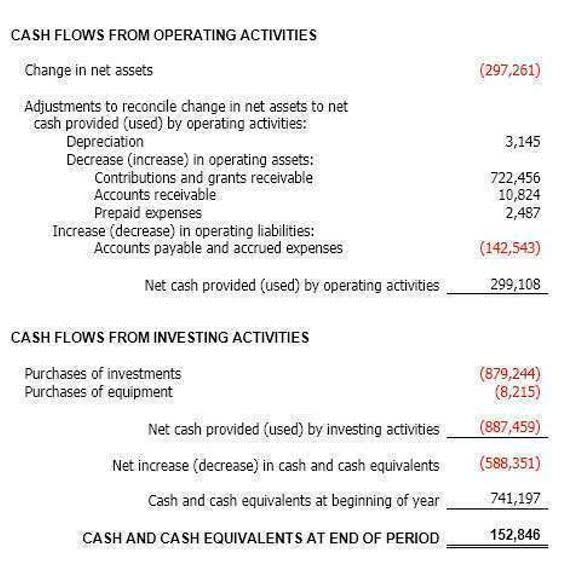
Employees who are paid semimonthly always receive two paychecks per month. Companies that run payroll with a biweekly frequency dole out a total of 26 paychecks per year. Companies that use semimonthly pay give employees 24 paychecks per year. Choosing between bi-weekly and semi-monthly pay schedules depends on the specific needs of the organization and its workforce.

Financial Planning and Budgeting
- In contrast with the semi-monthly pay date, the bi-weekly payday can fall on a different date each month.
- Navigating this ocean may be difficult at times, but ultimately, you need to know which jobs will best fit your qualifications and lifestyle.
- Aside from setting up and processing payroll, you will also learn how to troubleshoot common payroll challenges.
- The main difference is the level of effort each option puts on those who run payroll.
- According to the Bureau of Labor Statistics, 36.5% of employees are paid biweekly.
Don’t worry, you’re not going crazy, you just haven’t fully grasped the semi-monthly vs. bi-weekly payroll debate yet. Lucky for you, we’ve compiled a full guide on what makes these two types of payrolls different. Furthermore, bi-weekly pay can reduce the administrative burden for employers by aligning with weekly or bi-weekly billing cycles for utilities and other expenses. Collect employee feedback and make necessary adjustments to improve the system’s efficiency and meet your employees’ needs better. While there are a few drawbacks, note that there are two months each year with three payroll cycles. In this guide, we’ll dive into various payroll options and provide insights into the advantages of each.
Factors Influencing Payroll Choice
State laws vary regarding payroll frequencies, with some requiring employees to be paid twice a month on fixed dates. Your payroll schedule must also comply with the Fair Labor Standards Act (FLSA) to meet federal guidelines. Biweekly payroll means employees are paid every other week, totaling 26 paychecks per year. The business may consider choosing a provider that allows unlimited payroll runs, regardless of frequency. Monthly payroll is when employees are paid once a month, typically at the end of the month.
Difference #4: Payment processing
Let’s dive into the details and clear up the confusion once and for all. Bi-weekly payroll systems reduce administrative complexities for hourly employees through easier management of work hours and overtime pay. Semi-monthly payroll streamlines benefit deductions for salaried employees. If you’re paid hourly, your paychecks will reflect the number of hours you worked during the pay cycle before your payday, likely a week behind.


A biweekly pay period is a common payment schedule used by many employers. With a biweekly schedule, employees are paid once every two weeks, resulting in 26 pay periods in a year. When employees are paid semimonthly, salaried https://www.bookstime.com/ workers receive the same amount to employees each month. The extra two paychecks for biweekly pay frequencies can make budgeting more challenging if the business doesn’t properly prepare for months with three paychecks.
‘Semi-Monthly’ vs. ‘Bi-Weekly’ Pay Explained
Weekly pay schedules require 52 paychecks to be processed over a year, making it the most expensive and time-consuming pay schedule for employers. This, however, works best while employing contract or freelance workers who work irregularly or are paid hourly. In a monthly pay schedule, payroll is processed 12 times a year on a fixed recurring date.
- It tops the list, with 43% of US private establishments paying their employees every 2 weeks.
- Also, your payroll clerk will be able to keep a consistent schedule and pace with how they distribute them.
- Semi-monthly payments always occur on the same date (usually the 15th and the last day of every month).
- Now that we’ve gone through the main differences between a semi-monthly and a bi-weekly payroll, let’s take a look at each schedule’s pros and cons.
- Meanwhile, because there are 52 weeks (sometimes 53 weeks) in a year, employees who get paid bi-weekly receive 26 paychecks.
- In general, bi-weekly payrolls are used by companies that pay their employees a low to average hourly wage.
Steps to Calculating Overtime to Avoid Payroll Mistakes
- So, when you use the term, you have to be sure to leave clues for your readers so they know what you mean.
- This is a common misconception, but no—because some months have more than four weeks, a bi-weekly and semi-monthly payroll frequency aren’t quite the same.
- By the end, you’ll be able to make an informed decision and choose a payroll schedule that aligns with your business goals and workforce needs.
- This consistency can make it easier for both employers and employees to plan their budgets and expenses since they know exactly when to expect their next paycheck.
- Some employees prefer bi-weekly pay for its regular cash flow, while others prefer the predictability of semi-monthly pay.
- In summary, biweekly and semi-monthly pay periods are two distinct payment schedules commonly used by employers.
In the world of payroll and finance, terms like “biweekly” and “semi-monthly” are often used to describe different payment schedules. However, these terms can be confusing for many individuals who are unfamiliar with their meanings. In this article, we will dive into the differences between biweekly and semi-monthly pay periods, helping you understand what they mean and how they may impact your finances.
It’s also important to recognize and appreciate the work that goes on behind the scenes for those who run payroll. In his professional career he’s written over 100 research papers, articles and blog posts. Some of his most popular published works include his writing about economic terms and research into job classifications.Jack received his BS from Hampshire College. Teach money lessons at home with Greenlight’s $mart Parent newsletter. These mobile technologies can help with data collection so you can analyze user behavior and improve your payroll going forward. Learn how to handle multiple time off requests during the busy summer season.
- This can mean that employees are paid every second Thursday, for example.
- On the other hand, semi-monthly pay periods follow a different payment schedule than biweekly ones.
- Semi-monthly or bi-monthly payroll is a payment schedule through which employees receive payment twice a month.
- This makes it easier for the finance department to prepare and process payments on time.
- Get up and running with free payroll setup, and enjoy free expert support.
How Many Paydays in a Month?
While these are all important aspects of job searching, you should also think about your possible pay schedule. After all, how often you get paid can have a serious impact on how you budget your finances, save money, and plan for the future. semi monthly vs bi weekly Other factors could also influence what payroll type benefits your company and employees more. For some employees, semi-monthly pay feels inconsistent because the set day of the payment could fall on a different day of the week each time.
